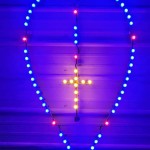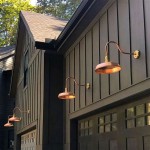Title 24 Outdoor Lighting Requirements: A Guide to Energy Efficiency
Title 24, the California Energy Code, sets comprehensive standards for building energy efficiency, including outdoor lighting. These regulations aim to reduce energy consumption and minimize light pollution, promoting environmental sustainability and promoting public safety. This article provides an overview of Title 24 outdoor lighting requirements, covering key points for compliance and energy-efficient design.
1. Lighting Fixture Efficiency
Title 24 mandates the use of energy-efficient outdoor lighting fixtures. The code specifies minimum efficiency standards based on the type of fixture and its application. For example, fixtures used for street lighting, parking lot lighting, and landscape lighting must meet specific efficiency requirements. These requirements are often expressed as lumens per watt (lm/W), which represents the amount of light produced per unit of energy consumed.
To ensure compliance, manufacturers must label their fixtures with their energy efficiency ratings. This allows designers and builders to select fixtures that meet the Title 24 standards. Additionally, the code encourages the use of light-emitting diode (LED) technology, which is generally more energy efficient than traditional incandescent bulbs.
2. Lighting Control Systems
Title 24 emphasizes the importance of lighting control systems to optimize energy consumption. These systems can automatically adjust lighting levels based on factors such as time of day, occupancy, and ambient light conditions. For instance, outdoor lighting can be dimmed or turned off during periods of low occupancy or when sufficient natural light is available.
Common control systems include timers, photocells, motion sensors, and smart lighting systems. Timers can be programmed to switch lights on and off at specific times, while photocells sense the presence of daylight and adjust lighting accordingly. Motion sensors activate lights only when movement is detected, minimizing energy waste. Smart lighting systems can be controlled remotely through apps or voice commands, providing greater flexibility and control over outdoor lighting.
3. Limiting Light Trespass and Glare
Light trespass and glare are significant concerns addressed by Title 24. Light trespass occurs when light from one property spills onto neighboring properties, causing annoyance and potential disruptions. Glare, on the other hand, refers to excessive brightness that can cause discomfort or impair visibility.
To mitigate these issues, Title 24 sets limits on the amount of light that can be emitted above the horizontal plane. This is achieved by using fixtures with specific shielding or cutoff angles. Shielding directs light downwards, preventing it from escaping horizontally. Additionally, the code encourages the use of warm-colored light sources, which are less likely to cause glare than cooler-colored lights.
4. Site Specific Considerations
Title 24 acknowledges the unique characteristics of different outdoor lighting applications. Therefore, it provides specific requirements for various lighting scenarios, such as:
- Street lighting
- Parking lot lighting
- Pathway lighting
- Landscaping lighting
- Security lighting
These requirements may include factors like light distribution, mounting height, and lumen output. Designers need to carefully consider the specific needs of each site and select fixtures that meet the relevant Title 24 standards.
5. Compliance and Enforcement
Compliance with Title 24 outdoor lighting requirements is crucial for new construction projects and renovations. Local building departments enforce these standards through inspections and permit processes. Before commencing any work, it is essential to consult with the relevant authorities to ensure that the planned lighting systems meet the code specifications.
Failure to comply with Title 24 can result in fines or delays in project completion. Therefore, it is highly recommended to work with qualified lighting professionals who have a thorough understanding of the code and its implications. These experts can guide designers and builders through the compliance process, ensuring that projects are executed efficiently and effectively.

2024 Title 24 Part 6 Outdoor Lighting Guide Technology Center

Fresno Distributing Company

2024 Title 24 Outdoor Lighting Alterations

2024 Title 24 Outdoor Lighting Signage Control Requirements

Nonresidential Indoor Lighting Alterations In 2024 Code Gabel Energy

Title 24 Residential Lighting Technology Center

2024 Title 24 Lighting Controls Envelope Acceptance Testing Requirements

A Quick Guide To Title 24 Lighting Requirements

Elk Lighting 64013 1 San Fernando Light Title 24 Compliant Led Outdoor Post In Hazelnut Broe

Code Compliance Beyond Upping Baseline Building Energy Performance Stok







